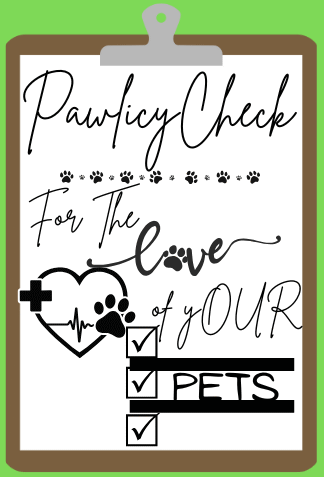Understanding Pet Insurance Coverage
Pet insurance provides financial protection for pet owners, allowing them to manage unexpected veterinary costs. When selecting a pet insurance policy, it is crucial to comprehend the different types of coverage options available; these typically include accident, illness, wellness, and liability plans. Each type of coverage serves distinct purposes and offers varying levels of financial security.
Accident coverage is primarily focused on injuries resulting from unforeseen events such as accidents or acute incidents. This plan typically covers costs related to emergencies, surgeries, hospitalization, and medications. On the other hand, illness coverage is designed for veterinary expenses related to sickness and chronic conditions, encompassing diagnostics, treatments, and ongoing care for various health issues.
Wellness plans, often considered add-ons, focus on routine care and preventive measures. They usually cover annual examinations, vaccinations, flea and tick treatments, and dental cleanings. While these plans streamline regular health maintenance, it is vital to note that not all comprehensive insurance policies will include wellness coverage, necessitating careful evaluation of each purchase.
Liability coverage is another important component, particularly for dog owners. This type of insurance protects against potential lawsuits caused by incidents involving your pet, such as bites or property damage, which could lead to substantial financial repercussions.
In understanding these coverage types, pet owners should also familiarize themselves with key insurance terminology, including deductibles, copayments, and annual limits. The deductible is the amount pet owners must pay out of pocket before the insurance benefits take effect. Copayments refer to the percentage of costs paid by the policyholder alongside the insurance reimbursement. Annual limits specify the maximum amount the insurer will pay within a policy year for treatments. Together, these components influence the overall cost and effectiveness of any selected plan.
Expert Tips for Comparing Pet Insurance Plans
Choosing the right pet insurance can be a daunting task, given the variety of plans and coverage options available. To make the selection process more manageable, it is important to compare different pet insurance policies systematically. Start by examining the premium costs. These are the monthly payments you will need to make, and they can vary significantly between providers. However, lower premiums do not always equate to better value. Carefully analyze what each policy covers in relation to its cost. Remember, the cheapest option may leave you with inadequate coverage when your pet needs it most.
Next, consider the specific exclusions outlined in each policy. Every pet insurance plan has certain limitations and exclusions for pre-existing conditions, hereditary issues, or specific treatments. Understanding these exclusions will help you gauge which plan offers the most comprehensive coverage for your pet’s health needs. Furthermore, customer service reputation and reviews are essential factors to consider. Look for feedback regarding the ease of filing claims and the responsiveness of the insurer. An effective customer service team can make a significant difference when you’re navigating the insurance process during a stressful time.
Additionally, evaluate the claims process itself. Investigate how quickly claims are reimbursed and whether they require upfront payment from you or if they offer direct payments to veterinary facilities. Resources such as PawlicyCheck are invaluable for accessing honest reviews and expert recommendations, helping you make an informed choice. To further streamline your decision-making, consider creating a personal checklist that includes coverage types, limitations, costs, and customer service ratings. This structured approach will facilitate direct comparisons and ultimately assist you in choosing the best pet insurance plan for your furry companion.
